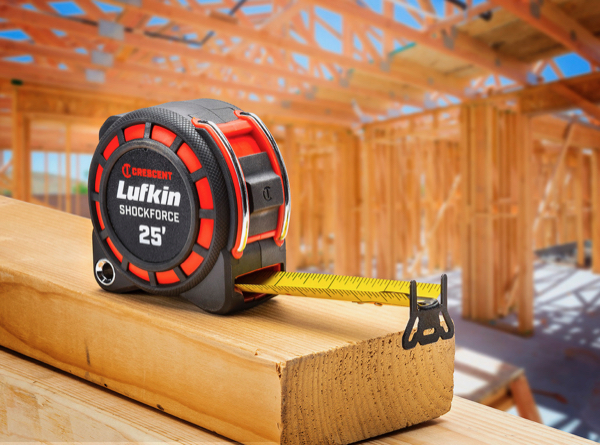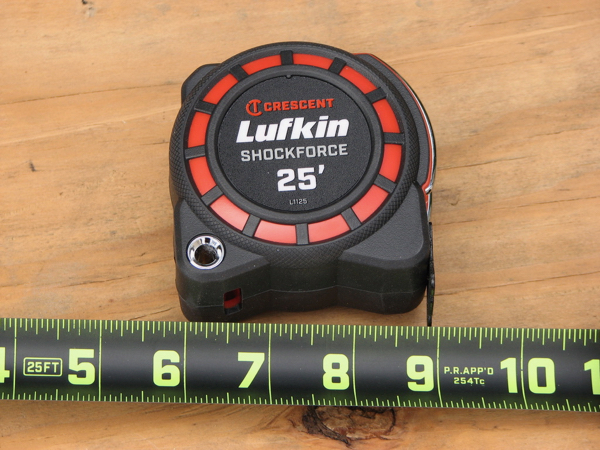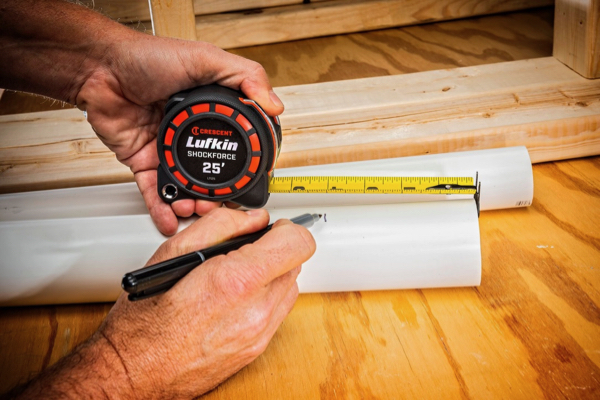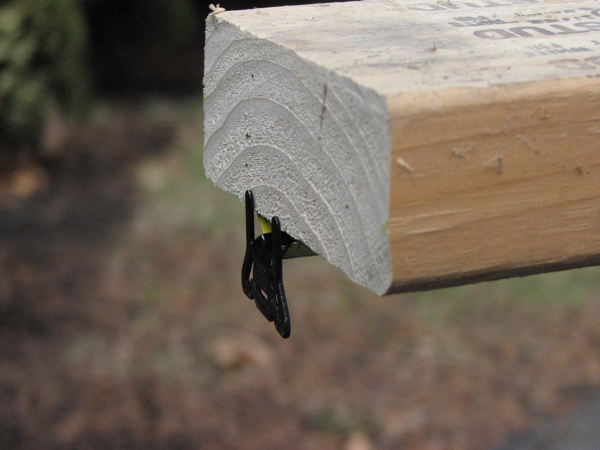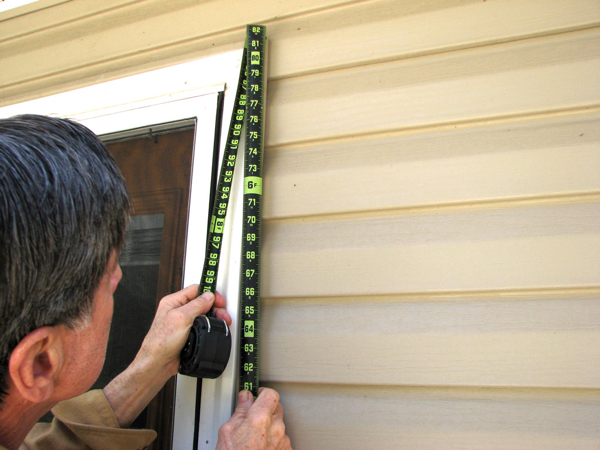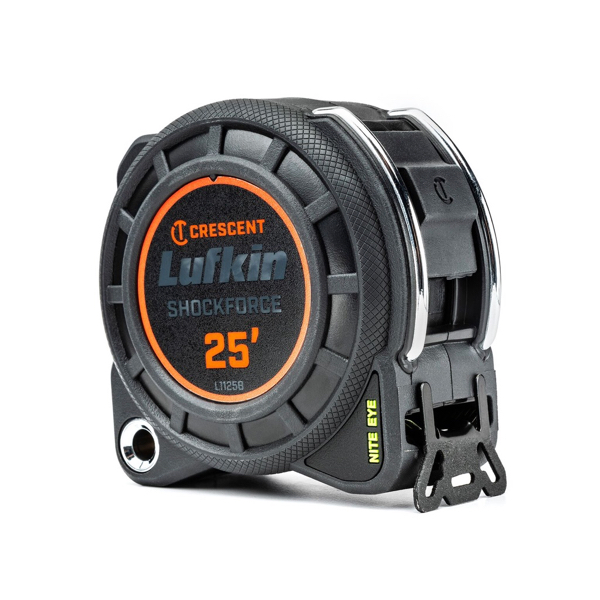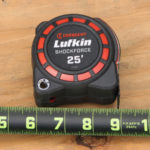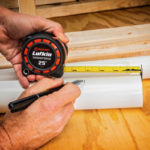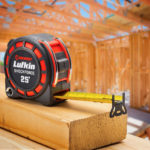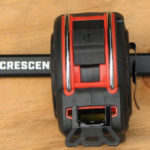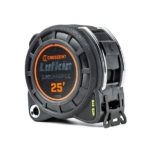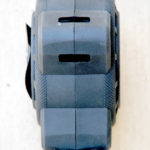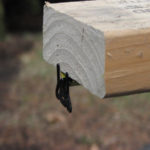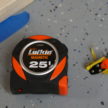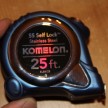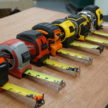Lufkin Shockforce Tape Measure Review
Crecent Lufkin Shockforce Tape Measures
By Ralph Mroz
A tape measure is of course one of the most used tools for any tradesperson, especially carpenters. Using one that is as close to perfect for your work is one of the little things that make the work go smoothly…while one that is aggravating, even in a small way, over time becomes a real thorn in your side.
Previous Head-to-Head Testing
Of course there are hundreds of tape measures from dozens of manufacturers and I haven’t handled them all, but I’ve worked with most of the popular ones from the major manufacturers. Rob and the crew did an extensive test in April of 2018 of some of the most popular tape measures and the Lufkin entry came in strong. Lufkin recently introduced the ShockForce tape measures and they’re the most perfect tape measure that I’ve found for me (in a 25-feet length). Here’s why.
Shockforce 25 Foot Tape
Size The Shockforce 25-feet tape measures have a 1 3/16 inch blade if flat, 1 1/16 inch wide blade when normally curled. This is a puts them into the wide tape category, which is what most of us want for non-finish work. Most wide 25-feet tape measures feel uncomfortably large in my dead-average size hand (according to the U.S. military). Comparing the dimensions of the Shockforce to its competitors shows that the actual differences are fairly small, yet the effect in the hand is noticeable.
The Shockforce still feels large but it’s not uncomfortable. This means that I don’t have to jigger my thumb around every time I want to lock the blade, which I need to with most other 25-foot tapes. Also the Shockforce 25-feet tapes have a true 3-inch bottom width, making inside readings easy and keeping the unit compact.
Big Constant Numbers
Big, consistent numbers The Shockforce tape measures have large, bold numbers along their entire length. Many other tapes have large numbers only along the first foot, and then they change to smaller, less bold numbers for the remainder of the length — why, I have no idea.
The large bold numbers of the Shockforce make reading inches easy, easier still for older eyes (or anyone wearing glasses), and make misreading more difficult (how many times have you thought you measured, say, 55 5/8-inches when you actually measured 54 5/8-inches?). Also, the large inch measurements are the primary mark for the entire tape — that is, the primary markings don’t change to feet-and-inches after the first foot as they do with so many other tapes. E
xcept for certain specific things (like doors), inches, rather than feet-and-inches, is the way most of us call off a measurement in our heads (it’s easier to remember “inches-fraction” then it is to remember “feet-inches-fraction”).
Durability
Ruggedness The ruggedness of a tape measure is usually specified as how many feet it can drop, or how many drops it can take, onto some hard surface. While real world relevant, both of these measures are often more anecdotal than actual data. You have to do an awful lot of drops in order to insure that the unit hit the surface from every possible angle, multiple times.
Crescent (Lufkin’s parent company) cites five experiments that it did, dropping the Shockforce (I assume the 25-feet version) onto asphalt and onto steel plate from ten feet (one story, more or less). They came up with over 140 drops onto asphalt before the unit broke, and over 200 onto steel plate (why steel plate would be more forgiving than asphalt, I can’t say). This is way more drops to failure than they measured for their main competitors.
100-Foot Drop Test
They also state plainly that the Shockforce has withstood 100-feet drops (not sure onto what – anything would be impressive) multiple times during its development. My own experiment wound up with a fractured (but useable) unit after five approximately 25-feet (two story) drops onto asphalt (on a 40-degree day).
Now, I think it’s asking an awful lot of a tape measure to not break after a couple one-story falls onto something hard, so I’m impressed by all of these results. Note that another Lufkin tape measure did quite well in the drop teststhat ToolBoxBuzz did earlier. Bottom line for me is that I’m quite satisfied that the Shockforce tape measures are not unduly fragile, and will probably last longer than many other quality tapes given precisely the same abuse.
 Tick-Mark Markings
Tick-Mark Markings
Tick-mark markings The Shockforce tapes assume that you’re an adult, and they feature normal tick markings for fractional-inch readings (the units are also normal 16th inches, not busy 32nd inches).
I find the so-called “fractional readout” tapes — with the actual fractions printed on them:
- Too busy to read,
- Insulting to my intelligence,
- Depressing because they indicate we’re raising a generation too stupid to read a regular ruler.
Lufkin Tape Measure Standout
14-feet standout Lufkin makes a big deal about the Shockforce’s 14-feet standout. I wasn’t able to get much more than 12-feet (with the body angled upward at about 15 degrees). I assume that under controlled conditions 14-feet is achievable (Lufkin couldn’t make the claim otherwise) but I’m not terribly patient. So for me, under normal working conditions, 12 feet it is, which is longer than any tape that the crew tested. It means that if I take a short step and extend my arm I can easily hook something 16-feet away; I can’t expect more than that!
Lufkin Hook Design
Large, rough end hook The Shockforce features a reasonably large end hook with a rough texture. The hook extends both down and up from the tape and provides hooking ability in full 360-degrees. The rough texture of the hook means that it will stay put on places where a shiny one wouldn’t. I’ve heard criticism of tapes with large top-and-bottom hooks as being not suitable for precise finish work. Well, no kidding! If you’re doing finish, trim, or cabinet work, there are better measuring tools — that’s why there’s such a variety of tape measures on the market. After all, it’s a rare day when you’re jumping back and forth, from minute to minute, between framing and trim.
Rubberized body Shockforce bodies have a hard rubberized feel to them. I assume this material helps to absorb shock from falls, but to me its main benefit is that it keeps the unit comfortable in your hand on hot sweaty days. Also, it doesn’t slide around on smooth surfaces as easily as a slick body does.
Blade Finish
Matte finish blade No shiny surface to reflect the sun back into your eyes. The matte finish blade makes reading the tape easy.
What’s The Pivot Hole For?
Pivot hole Ever have to draw an arch? It’s easy with the Shockforce: just locate the center of the circle, drive a nail through the pivot hole there, extend the blade to the length of the radius (minus 3-inches), hold your pencil to the tape’s end hook, and draw.
Two Sided Blade!
Two sided blade The back side of the Shockforce blades have marks orientated for vertical reading, making vertical measurements easier to take, especially over your head.
Low-Light Visibility
Low light version The Nite Eye version of the Shockforce features safety green markings on a matte black blade. This sort of light-on-dark printing is called “knockout” printing in the printing industry, and it’s long been known that knockout print is easier to read for small amounts of text such as found on signs, book titles, and so on. The only reason that the Nite Eye tape may seem more difficult to read at first is simply that you’re so used to reading regular black-on-yellow tapes. But in low light, the Nite Eye shines. Using both versions of the Shockforce 25-feet tapes in a dark room illuminated only by a small night light, once my eyes got dark-adapted the Nite Eye green-on-black tape was readable in dark corners where the regular version wasn’t. This is the tape measure I’d take into a dimly lit attic, cellar, or crawl space.
Belt Clip
Belt clip The belt clip on the Shockforce is a good compromise between strength and ease of use. It gives enough to easily clip onto a regular work belt with one hand, and to reinforced front pockets of work pants most of the time — having to tie up two hands to do this is clumsy and interrupts the flow. Clipping the unit onto my belt in the appendix position, the Shockforce stayed in place when I bent over, knelt down, etc. (although I didn’t do a prolonged polka or jig in those positions). I usually use a pouch to hold my tape measure because it’s so much easier, but for those times when you aren’t using a tool belt or apron and have to make do, this belt clip seems like a good design.
Tape Lock
Easy thumb lock The blade lock on the Shockforce is a traditional up/down affair. What makes this one nice to use is that it operates easily. It’s both a pain in the butt and work-flow inefficient when a blade lock takes the force of 20 mules to operate it. My preference is for an autolock on a tape measure, but I realize that that’s a religious opinion, and a traditional lock that operates as easily as this one does is just as acceptable in my book.
Overall Thoughts
That’s the list of Lufkin’s Shockforce features, and why I like this tape measure so much. The Shockforce doesn’t have a finger brake, but most of us unconsciously brake a retracting blade with the index finger of the hand holding the unit, or the thumb and fingers of the other hand, so I don’t consider this feature necessary. In fact, I usually forget to use it when tapes have it.
Note that I didn’t address longevity because, well, I couldn’t. Everyone’s work, work style, and work day is different; everyone works in different environments and treats their tools differently. And accidents (like drops) aren’t predictable. So how long the Shockforce would last for me before failure doesn’t translate to how long it would last for you. Plus, I didn’t want to wait a year or five to write this review. This is actually the feature that’s least important to me. A tape measure is inexpensive and it’s in your hands a lot every day. I’d rather have one that I liked a lot and lasted a reasonable amount of time than one I didn’t like but lasted twice as long.
Right now the Shockforce series comes in 16-, 25-, and 35-feet lengths, in traditional or Nite Eye blade colors, and in English or combined metric/English units. I’ll bet more are on the way.



